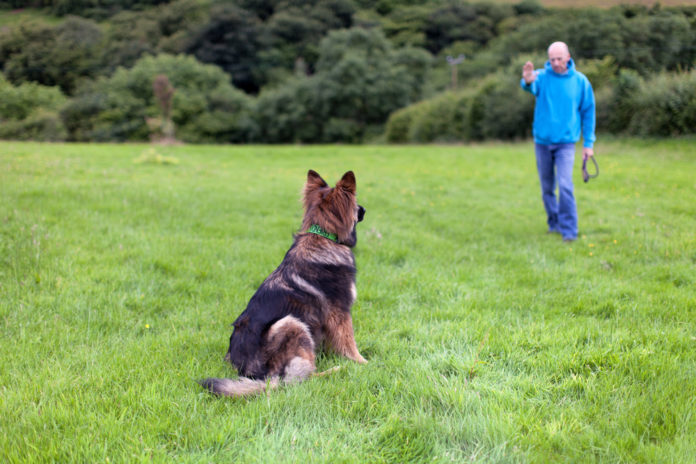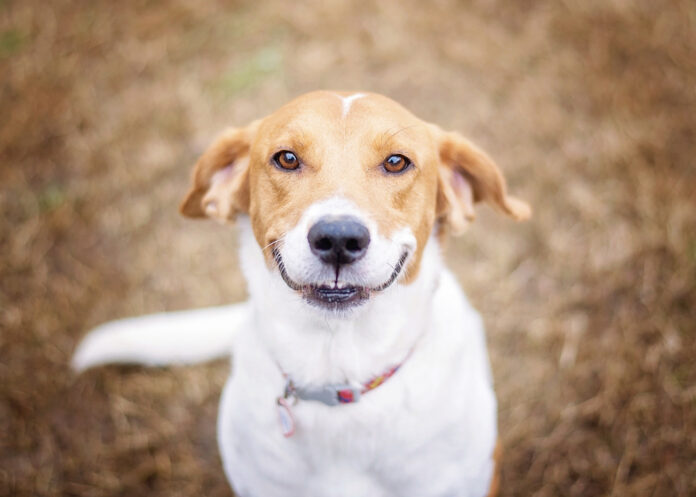10 tips for training your dog

When it comes to training your dog, the keys to success are found in following these ten important steps.
Dog training involves so much more than teaching your canine companion to sit, stay and come. It means teaching him how to live successfully in the human world. Training helps keep our dogs safe, provides them with much needed mental stimulation, and gives them a purpose. Have you ever seen the proud look on a dog’s face when he successfully performs a trick? Fun training sessions also strengthen the bond between you and your best friend. Training should begin the moment you first bring your dog home, whether he’s a puppy or an adult. Here are ten key training tips that will help you raise a happy and well-behaved dog.
1. Make sure your dog is healthy
If your dog is not feeling well, it may affect his behavior, but training is not the solution in this case. To keep your dog healthy, feed him a high quality diet, provide regular physical exercise and play, and allow for socialization, mental stimulation, and sufficient rest and quiet time. Have your dog checked regularly by a veterinarian. If you notice a sudden change in his behavior, or any signs he isn’t feeling well, a visit to the vet is warranted before you implement a training program.
2. Reward your dog for behaviors you like
Reinforcing spontaneous behaviors your dog offers on his own is probably the easiest and yet most overlooked training method. Throughout the day, when your dog does something you like, praise and reward him for it. No matter how much of a troublemaker you think your dog is, there are many moments where he actually behaves well. For example, when he happens to sit or lie down, goes to his bed, picks up a toy instead of your slipper, looks at you for feedback, or walks nicely on the leash, tell him how much you like that and give him a treat. Your dog will offer those behaviors more often because he has learned he will be rewarded for them. Over time, gradually replace food rewards with affection and other things your dog likes, such as going for a walk or playing fetch.
3. Be proactive and set your dog up for success
Prevention and management play important roles in training. It is a lot easier to prevent unwanted behaviors and teach your dog what you would like him to do, than to try to break unwanted habits later.
For example, if you don’t want your dog to steal food from the kitchen counter, either don’t leave food out or prevent him from having access to the kitchen counter. Then teach him what you want him to do instead by saying, for example, “leave it”. Puppies love to chew, so if you leave your expensive Italian shoes within her reach, don’t blame her for being destructive. Instead, put your shoes away and provide her with appropriate chew toys and treats.
Whenever your dog performs a behavior you don’t like, make sure you set up the environment in such a way that she cannot engage in this behavior again, then teach her a substitute behavior.
4. Start training in an environment with few to no distractions
Always start teaching a new behavior in an environment with minimal distractions, such as your living room. Once your dog has learned to do a behavior inside your house, gradually move to places with more distractions – for example, practice in your yard, then on a quiet street, then in a park, then on a busier street with people walking by, and so on.
One complaint every trainer hears is: “My dog sits at home but won’t sit anywhere else. He is very stubborn.” There is a simple explanation for why your dog may do a behavior at home but not anywhere else: canines are contextual learners. This means that whenever the context changes (e.g. you are at someone else’s house), your dog perceives it as a different situation, which means you need to teach the behavior from the beginning again.
This change of context can appear quite subtle to humans. For example, just because your dog has learned to sit on carpet, doesn’t mean he will sit on a tile floor. Or, if your dog sits for you while you are standing in front of her, she may not sit when you ask her from a chair. You have to teach every behavior in different environments and situations. But don’t worry — with practice, your dog will eventually understand that “sit” means “sit” regardless of where she is or what is going on around her. At that moment, your dog has generalized the behavior.
5. Use high value rewards
You want to use rewards your dog finds highly motivating. The majority of dogs are food motivated and real meats or cheese are great rewards for them. Some prefer toys or affection over food. Use whatever motivates your dog. Reward her generously whenever you teach a new behavior; one that she finds particularly difficult; or when working with her around distractions. A simple “good girl” or “good boy” cannot compete with a squirrel running by. You will have to offer more than that, like steak, hamburger and the like. Over time, you gradually wean your dog off treats and replace food with real life rewards, such as affection or play.
A simple “good girl” or “good boy” cannot compete with a squirrel running by.
6. Keep training sessions short and make them fun
Many short training sessions throughout the day are more effective than one or two long sessions. A session can last from a few seconds to a few minutes. You can easily incorporate training into your daily routine. For example, ask your dog to “come” and “sit” before you put the food bowl down. Ask her to lie down before you throw the ball. If you are teaching a new behavior, practice for a few minutes and always end on a good note Training is not supposed to be a tedious task. It’s supposed to be fun for you and your dog. Whether you teach “stay” or “shake”, it’s all tricks to your dog.
7. Be consistent
We often unintentionally teach our dogs unwanted behaviors. For example, some people don’t mind their dogs jumping on them — unless they are wearing nice clothes. Well, our dogs won’t see the difference between our casual jeans and a cocktail dress. Also, every family member has to be consistent with your training goals. It would be difficult for your dog to understand that he may jump on one person in the household, but not another. Use clear and consistent hand signals and verbal cues. For example, say “sit” instead of “sit down” if you want your dog to sit. Say “off” and not “down” when you want your dog to get off the couch. Our dogs pay close attention to us and a small change in our words or gestures may confuse them.
8. Have realistic expectations
Age, size and temperament all play a role when training your dog. Consider his physical and emotional abilities. Old dogs can certainly learn new tricks, but make sure your senior is able to do what you ask of him. Puppy brains are like sponges, and they can learn a lot in a very short time. But keep in mind that their behavior is not yet reliable. A timid dog may find seemingly simple tasks challenging. Training takes time and practice. Have realistic expectations and be patient. Every dog — just like ever human — learns at his own pace.
9. Go back to an earlier step when your dog “doesn’t get it”
When your dog doesn’t do what you ask him to, go back to the point where he was successful. He is not being stubborn or disobedient. He most likely just doesn’t know what you are asking him to do. For example, if your dog knows how to sit and stay for ten seconds, but won’t do it for 20 seconds, simply go back to ten seconds and gradually build on that. It is better to move in baby steps than to set your dog up for failure.
10. Seek professional help
When you need additional help with training your dog, find a professional trainer who uses force-free, positive reinforcement training methods. If your dog shows any signs of aggression, always contact a trainer sooner rather than later to avoid any escalation.
Training your dog involves patience, consistency and plenty of rewards. Make training fun and positive and he’ll respond the way you want him to!




